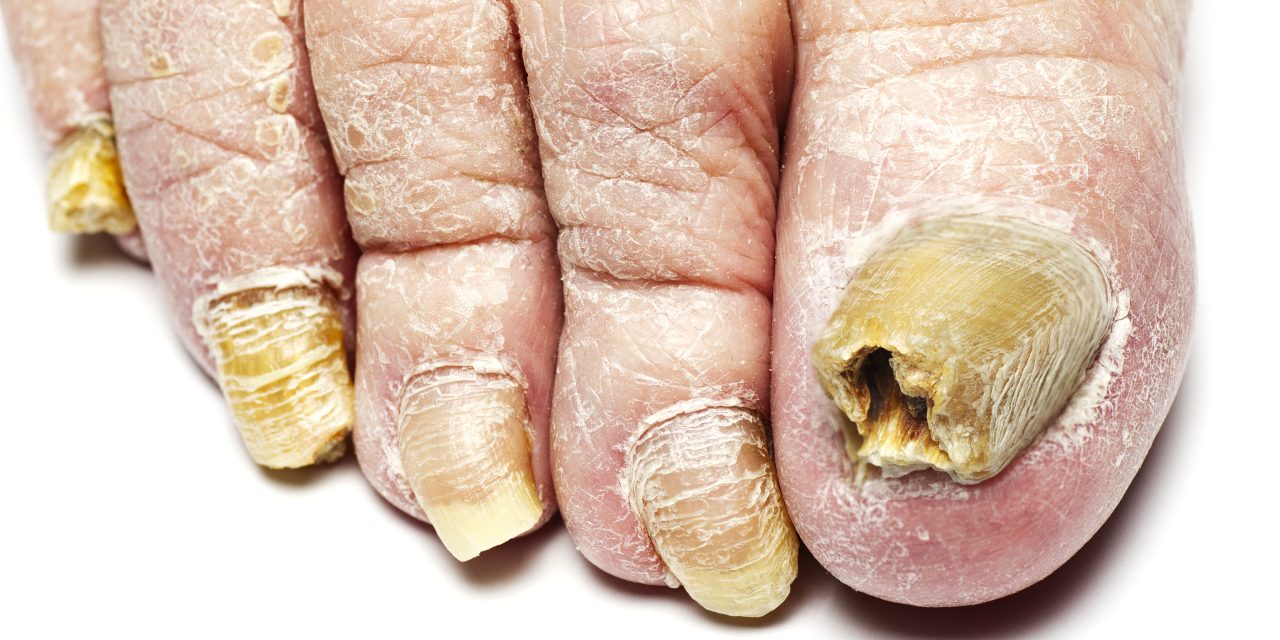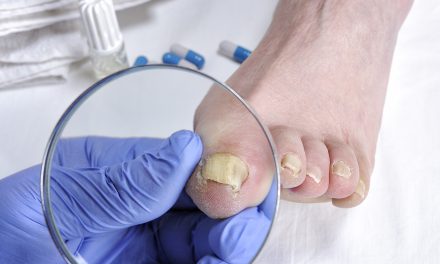Typically, a toe fungal infection can last several months and sometimes up to a year, depending mainly on the extent of the infection and the chosen treatment method. Understanding this timeline is crucial for those dealing with toenail fungus, as patience and consistency are key to overcoming the infection.
Key symptoms of toenail fungus include thickening, discoloration, and brittleness of the nail. Early detection and swift action can significantly reduce the duration of the infection.
There are various treatment options available, from topical creams to oral medications, which a healthcare professional can prescribe. Home remedies might offer some relief, but they are less effective than medical treatments. Seeking professional help ensures tailored advice, maximizing the chances of a full recovery.
Key Takeaways
- Toenail fungus can persist for several months to a year.
- Early detection and proper treatment are essential for recovery.
- Professional advice can improve treatment effectiveness.
Understanding Toenail Fungal Infections
Toenail fungal infections are a common problem affecting many individuals. They occur when fungi invade the toenail, causing discoloration, thickening, and potential damage to the nail structure. These infections can persist for months if not treated properly.
What Is Onychomycosis?
Onychomycosis is the medical term for toenail fungal infections. It involves a fungal invasion that affects the hard part of the nail. This condition can cause the nail to become misshapen, discolored, and brittle.
Often, onychomycosis leads to a gradual change in nail appearance, which may include yellowing and thickening over time. Various fungi are responsible, most commonly dermatophytes, although yeasts and molds can also be culprits. Treatment often involves topical or oral antifungal medications.
Causes of Nail Fungus
Nail fungus, also known as tinea unguium, typically develops from exposure to fungi in warm, moist environments. Common places where the infection begins include public swimming pools, showers, and gyms.
The risk increases if there is an injury or trauma to the nail, as this allows the fungus to enter the nail bed. People with a weakened immune system or who have certain conditions like diabetes are more susceptible to these infections. Wearing tight shoes or nail polish for extended periods can also trap moisture, promoting fungal growth.
Common Types of Fungal Nail Infections
There are several types of fungal nail infections, each caused by different fungi. Dermatophyte infections, the most prevalent, often lead to onychomycosis by attacking the keratin in the nail. This can occur through direct contact or through shared surfaces like shower floors.
Yeast infections, often caused by Candida species, are less common but can affect individuals with weakened immune systems. Molds, though rare, can also infect nails and typically appear in individuals with previous nail damage. Identifying the type of fungus is important, as it guides the choice of the most effective treatment.
Symptoms of Toenail Fungal Infections
Toenail fungal infections can cause noticeable changes to the nail’s appearance and structure. These symptoms often include discoloration and changes in nail texture, like thickening and brittleness. Understanding these signs can help with early detection and treatment.
Identifying Discoloration and Deformation
Discolored nails are a common sign of fungal infection. A nail may turn yellow, white, or brown. This discoloration often begins at the edge of the nail and gradually spreads inward. The color change can indicate the presence of fungus and show how far the infection has progressed.
In addition to discoloration, the nail may become misshapen. The edges can curl or lift up, and the surface may appear uneven or ridged. This deformation can make trimming difficult and may lead to discomfort.
Discoloration and deformation can be more pronounced in severe infections, and seeking medical advice is recommended when these symptoms are observed.
Nail Thickening and Brittleness
Another sign of toenail fungal infections is thickening of the nail. The infected nail often becomes harder and thicker than usual. This thickening can make it challenging to trim or maintain the nail properly.
Alongside thickening, brittleness often occurs. The nail may crack or split easily, making it vulnerable to further damage. This brittleness is due to the fungal invasion, which weakens the nail structure.
These changes can cause discomfort, especially when wearing shoes. It’s essential to address these symptoms promptly to prevent further complications and to maintain nail health.
Diagnosing Toenail Fungus
Diagnosing toenail fungus involves looking for specific signs and symptoms and distinguishing it from other conditions like psoriasis or skin cancer. A dermatologist plays a crucial role in identifying the presence of a fungal infection through a thorough examination.
Examination by a Dermatologist
When diagnosing toenail fungus, a dermatologist assesses the nail for distinct features like discoloration, thickness, and brittleness. They may ask about medical history, including any previous fungal infections. These details help determine the likelihood of a fungal cause.
To confirm the diagnosis, a dermatologist might take nail clippings or scrape debris for laboratory analysis. This helps identify the specific type of fungus responsible for the infection.
In some cases, a culture test might be done, providing more information for treatment planning.
Advanced techniques such as dermatoscopy allow dermatologists to carefully observe the nail structure. This tool aids in distinguishing fungal infections from other potential conditions, ensuring accurate identification.
Differentiating Between Fungus and Other Conditions
Toenail fungus can sometimes be confused with conditions like psoriasis or melanoma. These conditions can also cause changes in nail color and texture, making diagnosis challenging. A dermatologist examines the nail’s appearance and gathers detailed health information to differentiate between them.
Psoriasis may cause pitting and scaling, while melanoma or other skin cancers might display dark streaks or irregular patterns under the nail. These signs are carefully evaluated to rule out fungal infection.
In some cases, a biopsy may be necessary. This involves taking a small tissue sample for examination under a microscope, helping to differentiate between fungal infection and serious conditions like skin cancer or other nail disorders. Through these methods, accurate diagnosis is achieved, leading to appropriate treatment.
Treatment Options for Toenail Fungus
Treating toenail fungus involves several methods, including oral antifungal medications, topical treatments, and advanced technologies like laser therapy. Each option varies in application, duration, and effectiveness. The choice depends on factors like the severity of the infection, patient health, and any existing medical conditions.
Oral Antifungal Medications
Oral antifungal medications are often considered effective for treating toenail fungus. Two commonly prescribed drugs include terbinafine and itraconazole. These medications help the new nail grow free of infection, gradually replacing the infected part.
Patients typically take these drugs for six to twelve weeks, but it might take four months or longer to see results. It’s important to follow the doctor’s instructions closely.
Despite their effectiveness, oral antifungals can have side effects such as liver damage or skin rashes. Therefore, doctors may perform regular tests to monitor the patient’s health during treatment.
Topical Treatments
Topical treatments are less invasive options available as creams, gels, and nail lacquers applied directly to the infected nails. Products like efinaconazole and tavaborole are designed for daily use and are effective in mild to moderate cases.
Another option, ciclopirox, is a medicated nail polish applied both to the nail and surrounding skin.
Although these treatments require consistent application over several months, they have fewer side effects compared to oral medications. However, they may not be as effective for severe or extensive infections.
Advanced Treatments like Laser
Laser treatment is an emerging option targeting the infected nail with laser light to kill the fungus. This method usually requires multiple sessions, and duration may vary.
One advantage is that it involves less systemic impact compared to oral medications and can be less messy than topical treatments.
While laser therapy shows promising results, it might not be covered by insurance and can be expensive. Patients should consult their healthcare providers to assess their suitability for laser treatment and to discuss potential costs involved.
Home Remedies and Alternative Medicine
People often explore home remedies and alternative medicines for treating toe fungal infections. While these treatments might not offer immediate results, they can be effective when used consistently over time.
The Role of Tea Tree Oil
Tea tree oil is a commonly used remedy for toe fungal infections. It has natural antifungal and antiseptic properties that can help reduce infection.
Applying tea tree oil directly to the affected area can be beneficial.
For better absorption, it is suggested to file or buff the nail before application. Individuals can use a cotton swab to apply the oil twice daily.
Consistency is key, as it may take a few months to see noticeable improvements. Some even mix tea tree oil with a carrier oil, like coconut oil, to enhance its effectiveness and reduce skin irritation.
Vinegar Soaks and Essential Oils
Vinegar, particularly apple cider vinegar, is another home remedy for nail fungus. It creates an acidic environment that hinders the growth of fungi.
Soaking feet in a vinegar solution for 15-20 minutes daily can be useful.
To create the soak, mix one part vinegar with two parts warm water. Some people also add essential oils to the soak, such as lavender oil, which further helps with inflammation.
It’s important to dry feet thoroughly after soaking to prevent moisture buildup, which can worsen fungal growth. Regular use and patience are required for best results.
Preventing Toenail Fungus
Toenail fungus, often linked to conditions like athlete’s foot, can be prevented by keeping feet clean and dry. Staying away from contaminated areas can also reduce the risk of infection. These practices help limit exposure to harmful fungi and maintain healthy feet.
Maintaining Foot Hygiene and Dryness
Keeping feet clean and dry is vital in preventing toenail fungus. People should wash their feet daily with soap and water, making sure to dry them thoroughly, especially between the toes.
Moist environments encourage fungal growth, so using powder can help absorb moisture.
Socks and shoes matter: Wearing moisture-wicking socks, and choosing shoes that allow feet to breathe, can make a big difference. It is important to change socks regularly and avoid tight shoes.
In addition, he or she should trim toenails regularly, cutting straight across and avoiding the corners. This practice helps prevent any potential openings where fungus could enter, thus reducing infection risk.
Moisturizing feet, but not between the toes, can also promote skin health without encouraging fungal growth.
Avoiding Contaminated Surfaces
Avoiding shared or damp environments where fungi thrive can help reduce the risk of toenail fungus. He or she should wear flip-flops or sandals in public showers, locker rooms, and pool areas.
These places often harbor fungi, increasing exposure risk.
Proper footwear is essential: Sharing shoes or socks can also lead to infection. Avoid this practice to minimize contact with potential fungal carriers.
Using antifungal sprays or powders in shoes can add an extra layer of protection against fungus.
Additionally, washing towels and bedding frequently, especially if someone in the household has a fungal infection, is crucial. Healthcare providers often advise these steps to prevent the spread and recurrence of fungal infections.
Recovery and Nail Regrowth
Fungal nail infections take different times to heal based on the severity and type of treatment. Understanding how long recovery might take and what can boost nail regrowth is important for effective management.
Timeline of Healing
The healing time for a fungal nail infection varies. With oral treatments, improvements may start in a few weeks, but full recovery can take several months.
A study highlighted that complete regrowth often requires at least 5 mm of healthy nail growth.
Topical treatments might take longer, and patience is key.
Toenails grow about 1-2 mm a month, so noticeable changes can be slow. Regular care and following treatment plans help speed up recovery. The infection needs to clear entirely to ensure no recurrence.
Encouraging Healthy Nail Growth
For optimal nail regrowth, adopting healthy habits is beneficial.
Consumption of foods rich in biotin, such as eggs and nuts, can support stronger nails.
Biotin supplements might also be considered for boosting nail health and strength.
Proper foot hygiene, including keeping nails trimmed, also aids in maintaining healthy nails.
Preventing Fungal Regrowth
It is important to keep the affected area clean and dry to prevent fungus regrowth.
Some natural therapies also propose oils and creams to support the healing process, though their effectiveness varies.
Regular monitoring ensures the nails remain clear and healthy during regrowth.
When to See a Healthcare Professional
Identifying when to seek professional help for a toe fungal infection is crucial for effective treatment.
Recognizing signs of complications and knowing when to consult a podiatrist can make a difference in the healing process.
Signs of Complicated Fungal Infections
A healthcare provider should be consulted if a fungal infection doesn’t improve with over-the-counter treatments.
Signs like increased pain, swelling, and redness may indicate a bacterial infection.
If the toenail starts to detach from the nail bed or pus appears, professional advice is necessary.
Individuals with a weakened immune system, such as those with diabetes, should be especially vigilant.
In these cases, a simple toe fungal infection can escalate quickly.
It’s important to act promptly to prevent more serious conditions.
Consulting with a Podiatrist
A podiatrist specializes in foot health and can provide targeted treatment for toenail fungus.
They can perform tests to identify the type of fungus and prescribe stronger antifungal medications if needed.
Laser treatment and oral medications may also be recommended for persistent infections.
Patients with underlying conditions are often advised to see a podiatrist as they can offer tailored treatment plans.
They ensure that the infection is managed effectively without causing further complications.
Regular follow-ups with a podiatrist can help monitor the infection’s progress and make adjustments to the treatment plan if necessary.
Frequently Asked Questions
Toe fungal infections can be persistent and require proper treatment. Understanding effective treatments, healing signs, and potential complications is important for managing the condition.
What is the most effective treatment for toenail fungus?
The most effective treatment often involves oral antifungal medications, like terbinafine, which have a higher cure rate.
Topical treatments such as ciclopirox can also be used but may take longer to show results.
Laser therapy is an alternative for some patients.
How can you tell if toenail fungus is healing?
Signs of healing include the appearance of clear, healthy nail growth from the nail bed.
The infected nail may become less discolored or thickened over time.
It is important to continue treatment until a healthcare provider confirms the infection is gone.
What are the stages of toenail fungus?
Toenail fungus typically begins with a small white or yellow spot under the toenail.
As the infection progresses, the nail may thicken, discolor, and become brittle.
In severe cases, the nail may lift from the nail bed.
Can toenail fungus result in any fatal complications?
Toenail fungus itself rarely leads to fatal complications.
However, in those with weakened immune systems, it can potentially lead to more severe infections.
Individuals should seek prompt treatment to prevent complications.
How quickly can you treat fingernail fungus effectively?
Fingernail fungus can sometimes be treated more quickly than toenail fungus.
Oral antifungal treatments can show results in about 6 to 12 weeks, while topical solutions may take longer.
Treatment duration depends on the severity of the infection.
Is it possible to scrape out toenail fungus?
While scraping out toenail fungus might reduce the appearance of the fungal infection, it does not treat the underlying condition.
Medical treatments are necessary to eliminate the fungus and prevent recurrence. Always consult a healthcare provider for proper treatment advice.


















